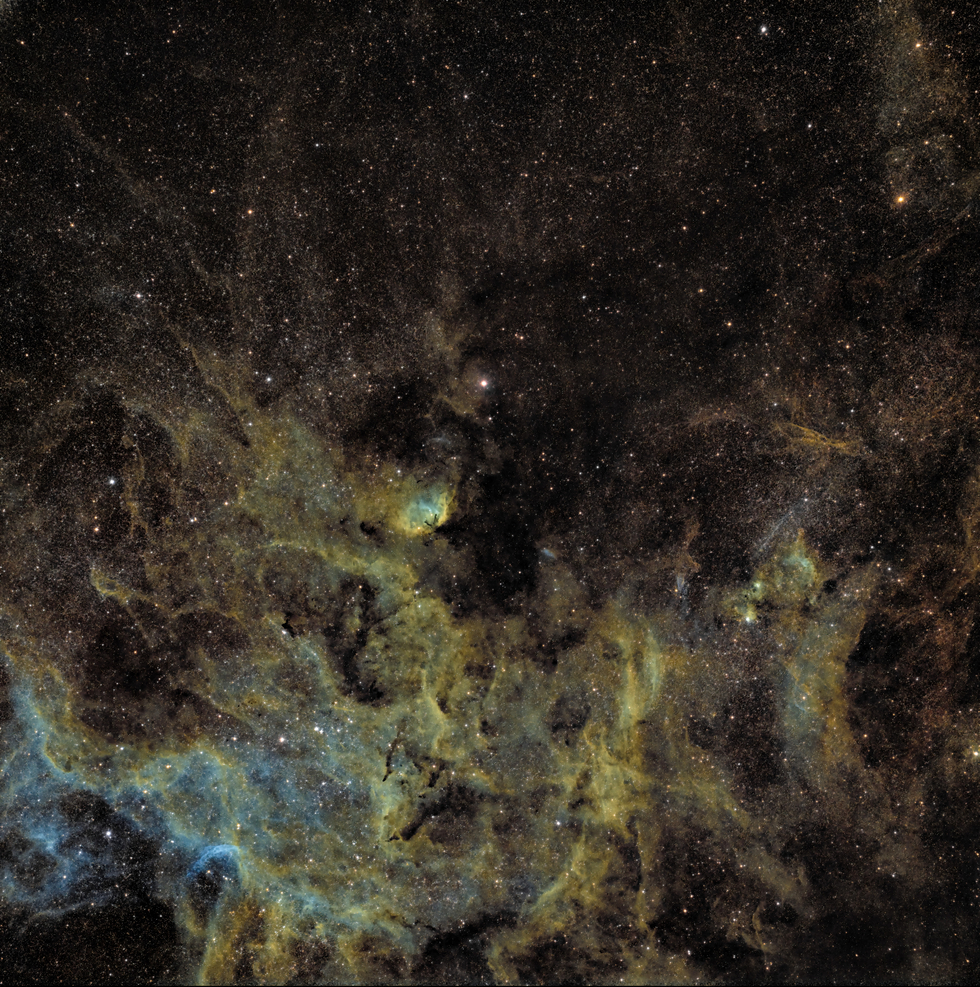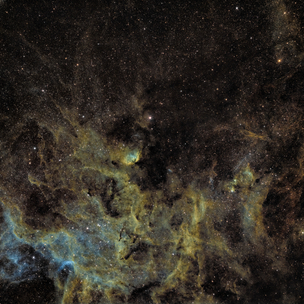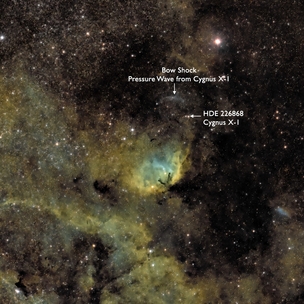Tulip Nebula and Cygnus X-1
0
7
Tulip Nebula and Cygnus X-1
The Tulip Nebula, or Sharpless 101 (Sh2-101) - here in the center of this widefield SHO-image - is an emission nebula located in the constellation Cygnus. It lies at a distance of about 6,000 lightyears from Earth.
Located nearby is Cygnus X-1, an X-ray source discovered in 1964, which is generally believed to be the site of a black hole. It is orbited by a blue supergiant star HDE 226868 that is Cygnus X-1's companion star. The star betrays the existence of the black hole because it is being whipped around an object every 5.6 days at a radius of 0.2 AU. The black hole is also consuming the companion star, which feeds a spinning accretion disk around the black hole resulting in relativistic jets of high energy particles being emitted perpendicular to the accretion disk. One of these jets is impacting a denser region of the interstellar medium forming a glowing curved bow shock (or shock front).
This widefield SHO-image of the Sh2-101 region was acquired with SPA-1 (Takahashi FSQ-106 ED refractor). Data from 4 one click observations (Ced 173)
Total integration time 240 minutes.
8 subs of 600s with each narrowband filter (SII, Ha and OIII)
Located nearby is Cygnus X-1, an X-ray source discovered in 1964, which is generally believed to be the site of a black hole. It is orbited by a blue supergiant star HDE 226868 that is Cygnus X-1's companion star. The star betrays the existence of the black hole because it is being whipped around an object every 5.6 days at a radius of 0.2 AU. The black hole is also consuming the companion star, which feeds a spinning accretion disk around the black hole resulting in relativistic jets of high energy particles being emitted perpendicular to the accretion disk. One of these jets is impacting a denser region of the interstellar medium forming a glowing curved bow shock (or shock front).
This widefield SHO-image of the Sh2-101 region was acquired with SPA-1 (Takahashi FSQ-106 ED refractor). Data from 4 one click observations (Ced 173)
Total integration time 240 minutes.
8 subs of 600s with each narrowband filter (SII, Ha and OIII)
SPECIFICATIONS
Telescope
SPA-1
Camera
FLI PL16803
Location
IC Astronomy Observatory, Oria, Spain
Date of observation
7/04/2022
Filters
SHO
Processing
AstroPixelProcessor, Photoshop CC with AstroPanel Pro, Astronomy Tools, Topaz Sharpen AI and Denoise Projects 3 plug-ins
Credits
One click observations TL




